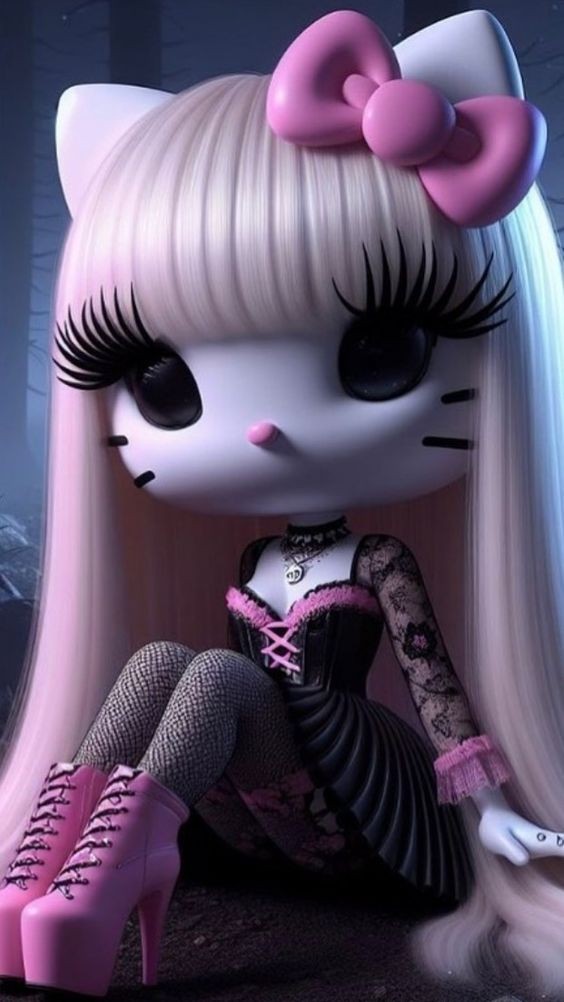Hello Kitty: A Comprehensive Look at the Iconic Character
Hello Kitty, the adorable white cat with a red bow, has become a cultural icon since her debut in 1974. Created by Sanrio, a Japanese company known for its whimsical and charming characters, Hello Kitty is not just a beloved cartoon character but a significant part of global pop culture. Her appeal spans generations and continents, making her one of the most recognizable and enduring symbols of kawaii (cute) culture.
Origins and Creation
Hello Kitty was created by Yuko Shimizu and first appeared on a vinyl coin purse in Japan. The character's full name is Kitty White, and she is depicted as a cheerful, friendly, and kind-hearted kitten. Her story begins in the fictional town of London, where she lives with her family, including her parents, George and Mary White, and her twin sister, Mimmy White.
The design of Hello Kitty is deliberately simple. She has no mouth, which allows her to be a universal figure that anyone can project their feelings onto. Her round face and characteristic red bow have become her signature look. This simplicity has contributed to her timeless appeal and versatility in various merchandise and media.
Rise to Fame
Hello Kitty’s popularity soared in Japan during the late 1970s and early 1980s. Initially marketed as a character for children, she quickly attracted a wide range of fans, including adults. Her image was used on a diverse array of products, from school supplies to household items. The character's charm was amplified by Sanrio's ability to adapt her image for different products and seasons, keeping her fresh and relevant.
In the 1980s, Hello Kitty’s fame spread beyond Japan. Her introduction to Western markets, especially in the United States, marked the beginning of her international success. This expansion was facilitated by collaborations with major retailers and the creation of a wide range of Hello Kitty-themed products.
Cultural Impact
Hello Kitty’s cultural impact is vast. She has transcended her origins as a simple cartoon character to become a global brand. Her image appears on a multitude of products, including toys, clothing, accessories, and even luxury items. The character's popularity led to the creation of Hello Kitty-themed cafes, amusement parks, and collaborations with high-fashion brands like Swarovski and Louis Vuitton.
One of the notable aspects of Hello Kitty’s cultural influence is her role in promoting Japanese pop culture worldwide. The character's success has helped to introduce and popularize other aspects of Japanese culture, such as anime, manga, and kawaii culture. Hello Kitty’s ability to appeal to diverse audiences across different cultures has cemented her status as a global icon.
Media and Entertainment
Hello Kitty has been featured in various forms of media. The character has appeared in numerous animated television series, including “Hello Kitty’s Furry Tale Theater” and “Hello Kitty’s Stump Village.” These shows, aimed at children, often focus on themes of friendship, kindness, and problem-solving.
In addition to TV shows, Hello Kitty has been featured in films, books, and video games. The character’s versatility allows her to be adapted into different genres and formats, keeping her relevant in the ever-evolving entertainment landscape.
The Business of Hello Kitty
Sanrio’s business strategy has played a significant role in Hello Kitty’s enduring success. The company has meticulously managed the character’s image and brand, ensuring that her portrayal remains consistent with her original values of kindness and friendliness. Sanrio’s approach to licensing and merchandising has allowed Hello Kitty to appear on a vast array of products, appealing to a wide range of consumers.
Sanrio’s licensing strategy is notable for its careful selection of partners and products. The company ensures that Hello Kitty’s image is used appropriately and maintains a high standard of quality. This approach has helped preserve the character’s reputation and appeal.
Legacy and Future
Hello Kitty’s legacy is evident in her continued popularity and cultural significance. The character has evolved over the decades, adapting to changing trends while maintaining her core appeal. Hello Kitty’s influence extends beyond merchandise and media; she represents a form of global cultural exchange and the enduring power of simple, positive imagery.
Looking to the future, Hello Kitty is likely to continue evolving and adapting to new trends. Sanrio’s ongoing efforts to innovate and expand the character’s presence in various media and merchandise will likely ensure that Hello Kitty remains a beloved and relevant figure in popular culture.
Conclusion
Hello Kitty’s journey from a simple coin purse design to a global icon is a testament to the power of charming and versatile characters. Her influence spans across cultures and generations, reflecting a unique blend of simplicity, kindness, and adaptability. As Hello Kitty continues to captivate hearts around the world, her story remains a shining example of how a character can transcend boundaries and become a beloved symbol of joy and positivity.






